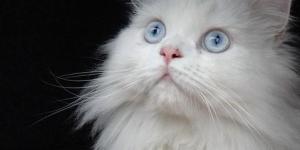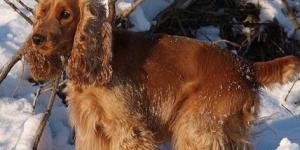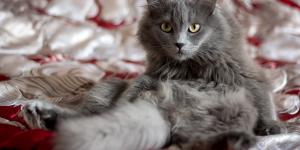My Cat's Fur Looks Rough



See files for Cats
When a cat's coat looks dull and rough, it is an indicator of poor health. Coat condition can point out problems in our cat, even if there are no other symptoms or signs of illness. A healthy cay should have a bright, soft and silky coat. A rough coat which looks greasy, dull, coarse or even matted implies an underlying health problem causing the disheveled appearance. There are other factors which will need to be taken into consideration. If your cat spends a lot of time outside, there may be environmental causes at fault. If your cat is an indoor cat, then we need to consider other causes. These could be psychological as much as physical.
At AnimalWised, we take a look at why my cat's fur looks rough, investigating the possible causes and suggesting solutions to bring both your cat's coat and their general well-being back to health.
What does your cat's coat tell you about their health?
Depending on the breed of cat, their coat can provide a lot of character. This is particularly noticeable with longhaired cat breeds such as Persian or Himalayan cats. This doesn't mean hairless cats don't have similar levels of character. However, since a cat's coat will be a signifier of their overall health, it does mean you will have to look at other factors when determining a hairless cat's well-being.
While hairless cats can live a healthy and fulfilling life, there are several functions of a cat's coat which include:
- Thermal protection: a cat's fur with protect them from both cold and excessive exposure to sunlight and heat. Hairless cat breeds will often need special clothing to protect themselves from the cold in winter as well as the sun's rays when exposed to natural light. These UV rays can also cause health problems such as skin cancer or solar dermatitis in cats.
- Physical protection: a cat's coat doesn't just protect from heat and UV light. It also serves as a practical barrier against physical threats. This could be from jagged tree limbs in the wild, attacks by rival cats or even attacks from larger predators.
- Communication: as with many mammals, cats use their fur as part of a complex communication system. For example, their ability to bristle their hair or make it stand on end sends a clear signal they are angry, defensive or otherwise agitated. Making their hair stand on end makes a cat look bigger which is useful if they want to avoid a predator or win a fight against an aggressive cat. Their fur is also important as it helps them to better interact with their environment.
If a cat's fur looks oily or rough, it can indicate a health problem. Cats are known for their self and social grooming. They lick and preen extensively to ensure their coat is healthy and their protection is at its fullest. They will even do this to other cats- If a cat's coat is looking particularly rough, you should determine whether they are maintaining good grooming habits. A cat which does not groom is not carrying out their normal behaviors and it is important to know why.
Learn more about why a cat's coat looks greasy in our related article.

Poor coat condition in cats causes
If your cat's fur looks rough or dull, there will be a reason for it. A cat will only go against its instincts to groom properly if there is some mental or physical problem prohibiting them from doing so. A cat will have rough hair for one of the following reasons:
- Diet: this is perhaps the most common of hair related disorders in cats. An inadequate diet is one which does not provide enough of the necessary nutrients our cats need. If this is the case, our cat will show their deficiency by losing luster in their coat, making it dull, prone to matting and even falling out in acute cases.
- Internal parasites: not receiving enough nutrients from their food isn't always because a cat isn't getting the right food. They may be suffering from a malabsorption problem meaning the nutrients can't be absorbed by the cells in a cat's body. This means even when they eat well, intestinal parasites in cats can prevent nutrient absorption and lead to poor coat conditioning.
- Skin pathologies: dermatological problems can also lead to problems with a cat's hair looking dull. A coarse coat can develop due to the skin itself having a problem. Skin problems like dermatitis might be due to scabies, a condition caused by mites which burrow into the skin. This rough fur can be accompanied by dandruff, alopecia (hair loss), dry skin and even wounds opening up where the skin breaks.
- Systemic pathologies: there are also many systemic diseases which can lead to our cat's developing a poor coat and rough fur. These include intestinal disorders, chronic kidney failure, immunodeficiency or even cancer. The systemic pathology causes the body to spend more energy and resources on fighting the disease with the coat condition suffering in the process.
- Stress: if we see our cat's hair is rough or their coat is becoming damaged, it is important to take them to the vet. This is so that we can rule out the possibility of certain pathologies or begin treatment if necessary. Psychological stress can also be the root cause of your cat's rough hair. The cat's fur is often oily because they do not groom away the natural oils they produce. The stressor leading to the poor condition of their coat can be hard to determine, but it is important to look at possible environmental stressors such as moving to a new home, introducing a new pet, the arrival of a baby or problems with other cats outside the house. Stress lowers a cat's immune system, weakening their defenses and leading to rough hair.
- Lack of hygiene: while cat's will indeed groom themselves, many will need regular brushing from their owners to maintain a healthy coat. This is usually due to their breed as longhair cats will need some help to keep their coat clean and healthy. If they don't they can become matted and promote ill health due to parasites and bacteria. Shorthair cats may also need some help, especially if they are unable to groom themselves properly due to old age or injury.

Caring for a cat's coat
To avoid a cat's coat from looking rough and to help make it lustrous and healthy, there are certain considerations to make. Below we provide both solutions to the cause of rough hair as well as general feline maintenance tips. They include:
- Diet: the food we provide our cats should be of the highest quality or at least that which provides sufficient nutrition for a cat's needs. Many commercial brands are specially designed to provide all the nutrient's essential in a cat's diet so that it can build its immunity, exercise regularly and maintain a healthy coat. There are other factors which will determine the type of feed you need to give to your cat. If your cat is a kitten, old, has digestion issues or is otherwise unwell, you may need to amend their diet accordingly. As they are obligate carnivores, it is generally not recommended for your cat to be vegan, but we have more information on vegan diets for cats to learn more.
- Deworming: the presence of parasites such as mites or fleas can also have a bearing on the condition of a cat's coat and make it appear dull. They can even reduce their life expectancy by up to five years. This is why it is so important to keep cats dewormed using a product recommended by our vet. Providing the right vaccinations as soon as they are able will also help maintain the health of our cat and keep their coat nice and shiny. Deworming and vaccinations are not one off occurrences. They both have schedules which need to kept to ensure continued protection. Conditions such as dermatitis caused by allergies from fleas or other parasites make deworming so important. However, the presence alone of these insects doesn't always mean their coat will be visibly damaged.
- Hygiene: brushing regularly will help you notice when a cat might have an infestation, check for general damage and remove dead hair which can promote infection. The older a cat gets, the more careful and regimented we need to be in taking care of their hygiene needs.
- Stress: as stress can lead to rough or damaged fur in cats, avoiding it is one of the best ways to keep their coat healthy. Cats are creatures of habit, so they need to be kept in a routine. Deviation from this routine can cause them stress, making them act out or developing physical problems such as fur damage. Even boredom can be stressful for a cat, so you need to ensure they are engaged and have sufficient environmental enrichment. If you look after your cat's mental needs well, but are still unable to reduce their stress levels, you may need to speak to a feline ethologist who can help determine the cause and treatment for this stress.
Find out more about a cat's self-grooming behavior with our video below:

If you want to read similar articles to My Cat's Fur Looks Rough, we recommend you visit our Beauty tips category.







 My cats fur is in bad shape. Her fur didn't grow back in places. She looks like she needs brushed and doesn't like to be brushed. This happened after I got her groomed. Her fur was very thick.
My cats fur is in bad shape. Her fur didn't grow back in places. She looks like she needs brushed and doesn't like to be brushed. This happened after I got her groomed. Her fur was very thick.



